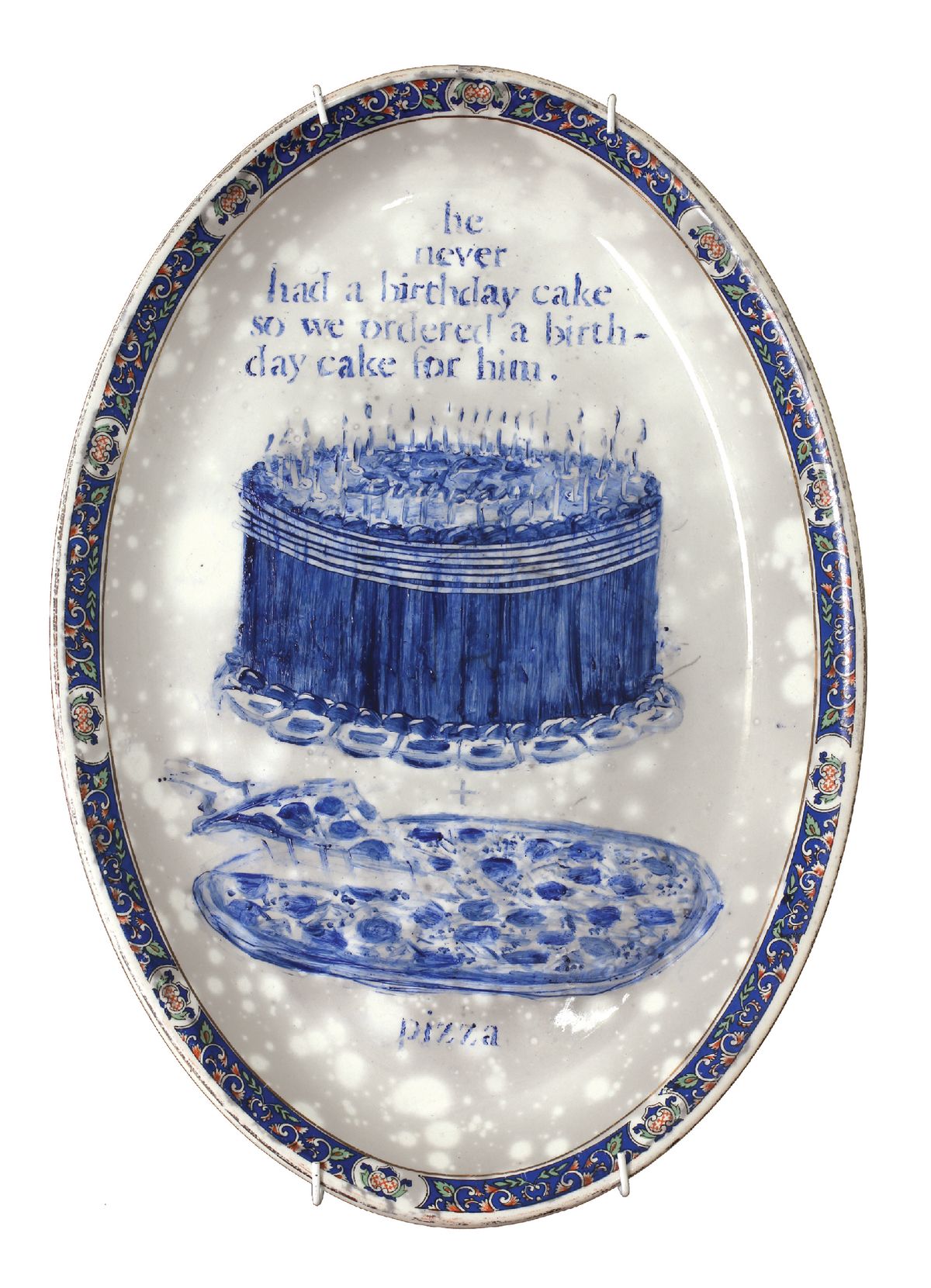The painter Julie Green died Tuesday, 12 October, aged 60, after a battle with ovarian cancer. A professor of art at Oregon State University, Green created a poignant legacy that highlights the strange and soulful ritual for condemned prisoners on death row through The Last Supper, a series of blue on white ceramic kiln-fired dishware with painted images of inmates’ final dinner requests. In September, she ended the project, which spanned twenty-one years and 1,000 plates, to illuminate the complex emotional decisions of those facing imminent death, as well as the racial and historic implications of capital punishment in the United States. At the time of her death, The Last Supper’s first 800 plates were on display at the Bellevue Arts Museum in Bellevue, Washington, where they remain through January.
“The meals humanize death row,” Green said in a 2020 statement for the Bellevue exhibition. Her plan was to paint 50 plates a year until the United States abolished the death penalty. But as her illness progressed, she decided to conclude the series at 1000 works. “Menus provide clues on region, race, and economic background,” Green says. “A family history becomes apparent when [the] Indiana Department of Correction, adds, ‘He told us he never had a birthday cake so we ordered a birthday cake for him.’”
Initially, Green became invested in death row meals after noticing that news outlets typically make the last meal part of the story of an inmate’s final hours. The dissonant power of The Last Supper is found in the intimate nature of the food, the classic cobalt pigment, the violence of capital punishment, and the public as spectator. Some plates were created the day of an execution, almost in real time. In other cases, she combed records to identify last meal requests, such as her paintings of two Black Mississippi teenagers, who, in 1947, received fried chicken and watermelon before being sent to the electric chair for murder. In cases where an inmate requested nothing, Green painted the word None or the text recorded by prison officials. “I’m a food person,” she told the New York Times in 2013. “Food has always been celebratory for me. That’s why the whole thing is so interesting to me, because of the contrast.”
In 2018, Green began First Meal, intended as an antidote to painting death row suppers. Each work in the series depicts the first meal eaten upon release from incarceration for wrongful conviction. “Naively, I thought these paintings would be more uplifting,” she wrote in a 2020 essay. “Of course, the meal is celebratory, but there is nothing compared to the lost years.”


